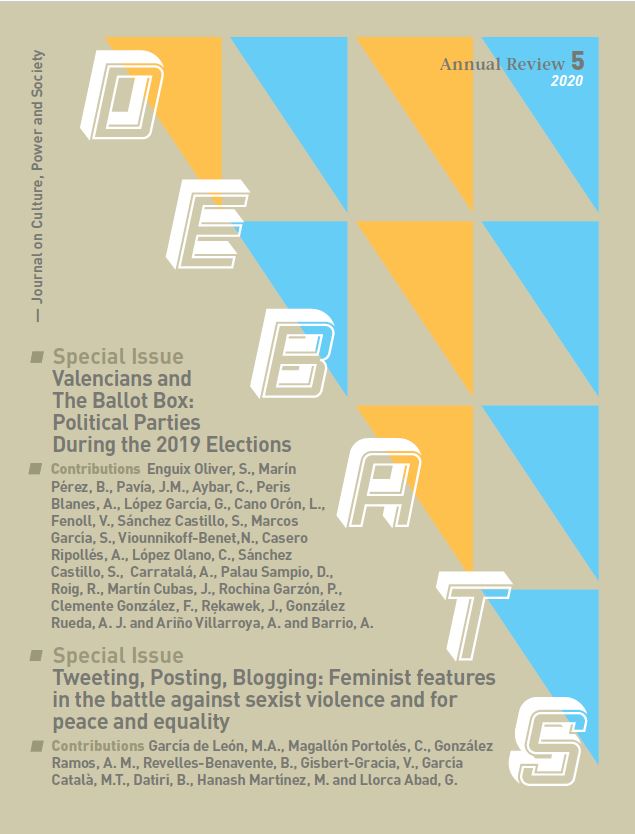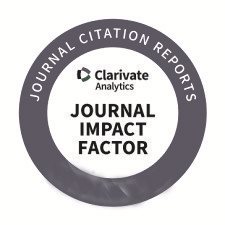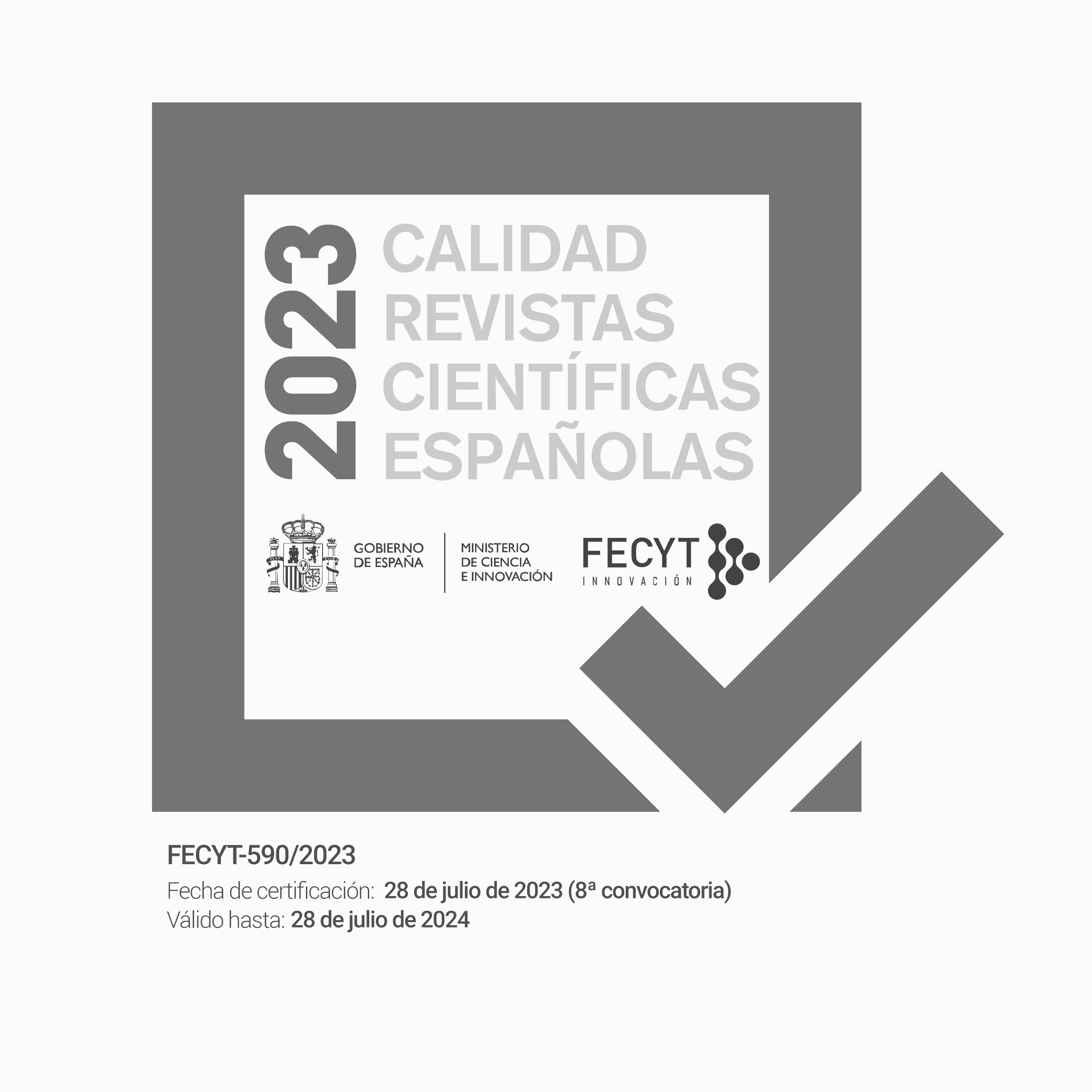The use made of video in the social media by candidates in the 2019 Valencian Autonomous Government elections
DOI:
https://doi.org/10.28939/iam.debats-en.2020-6Paraules clau:
social media, politics, elections, audiovisual communication, The Valencian CountryResum
Videos are increasingly being used in social networks for a wide range of purposes, including political campaigning. Here, social media seem to be gaining an edge over the mainstream variety when it comes to making political choices, especially during election campaigns. This paper examines the extent to which social media is used in Valencian Autonomous Government elections and looks at each of the candidate's experiences in this regard in the April 2019 elections. We pay particular attention to the differences between the three networks analysed — Facebook, Twitter and Instagram, and consider what kind of video information is shared. For these purposes, we create nine formal categories, some of which draw on traditional media while others are created ad hoc for our study. Based on these categories, we identify which media are most used, and give guidelines on best practices. We also consider differences in usage between politicians from the left and right ends of the political spectrum. The results point to a general lack of communication strategy in candidates’ use of discretionary video materials.
Descàrregues
Referències
Alcat, E. (2011). Influye!: Claves para dominar el arte de la persuasión. Madrid: Alienta Editorial. DOI: http://doi.org/10.22478/
ufpb.1809-4783.2018v28n3.42534
Arias Maldonado, M. (2016). La digitalización de la conversación pública: Redes sociales, afectividad política y democracia. Revista de Estudios Políticos, 173, 27-54. DOI: http://doi.org/10.18042/cepc/rep.173.01.
Barberá González, R. and Cuesta Cambra, U. (2018). Información política y redes sociales en Estados Unidos: De Obama
a Trump. Informação & Sociedade, 28(3). DOI: http://doi.org/10.22478/ufpb.1809-4783.2018v28n3.42534
Baviera, T., García Ull, F. and Cano Orón, L. (2017). Twitter: ¿protagonismo vicario? In G. López García and L. Valera Ordaz (coor.), Pantallas electorales: El discurso de partidos, medios y ciudadanos en la campaña de 2015. Barcelona: Editorial UOC.
Benkler, Y., Faris, R. and Roberts, H. (2018). Network propaganda. New York: Oxford University Press.
Bennett, W. L. (2012). The Personalization of Politics: Political Identity, Social Media, and Changing Patterns of Participation. The Annals of the American Academy of Political and Social Science, 644(1), 20-39. DOI: http://doi.org/10.1177/0002716212451428
Bernal, A. I. (2015). Tecnología, redes sociales, política y periodismo. ¿pluralidad informativa o efecto bumerán? Cuadernos.info, (36), 191-205. doi: http://doi.org/10.7764/cdi.36.647
Caldevilla Dominguez, D. (2009). Democracia 2.0: La política se introduce en las redes sociales. Pensar la Publicidad. Revista Internacional de Investigaciones Publicitarias, 12(2), 31.
Campos Domínguez, E. and Calvo, D. (2017). La campaña electoral en Internet: Planificación, repercusión y viralización en Twitter durante las elecciones españolas de 2015. Comunicación y Sociedad, 29, 93-116. DOI: https://doi.org/10.32870/cys.v0i29.6423
Cartes Barroso, M. J. (2018). El uso de Instagram por los partidos políticos catalanes durante el referéndum del1/O; Revista de Comunicación de la SEECI, 17. DOI: http://doi.org/10.15198/seeci.2018.0.17-36
Castells, M. (2001). La Galaxia Internet. Barcelona: Plaza & Janés.
Cocker, H. L. and Cronin, J. (2017). Charismatic Authority and the YouTuber: Unpacking the New Cults of Personality. Marketing Theory, 17(4), 455-472. DOI: http://doi.org/10.1177/1470593117692022
Crilley, R. and Gillespie, M. (2019). What to Do about Social Media? Politics, Populism and Journalism. Journalism, 20(1), 173-176. DOI: http://doi.org/10.1177/1464884918807344
Dader García, J. L. and Campos, E. (2006). Internet parlamentario en España (1999-2005). Zer: Revista de estudios de comunicación, 20. Accessed at http://dialnet.unirioja.es/servlet/oaiart?codigo=2238674
Del Moral, J. A. (2006). Los principios de la política 2.0. Accessed at https://blogs.alianzo.com/redessociales/2006/02/21/
los-principios-de-la-politica-2-0/Dent, S. (2017). Food Dominates Facebook Video Views, Study Shows. Accessed at https://bit.ly/31R31rN
Doyle, G. (2015). Multi-platform Media and the Miracle of the Loaves and Fishes. Journal of Media Business Studies, 12(1), 49-65. DOI: http://doi.org/10.1080/16522354.2015.1027113
Driessens, O. (2013). The Celebritization of Society and Culture: Understanding the Structural Dynamics of Celebrity Culture. International Journal of Cultural Studies, 16(6), 641-657. DOI: http://doi.org/10.1177/1367877912459140
Eco, U. (1968). Apocalípticos e integrados. Madrid: Lumen.
Elorriaga Illera, A. and Monge Benito, S. (2018). La profesionalización de los youtubers: El caso de Verdeliss y las marcas. Revista Latina de Comunicacion Social, 2018 (73), 37-54. DOI: http://doi.org/10.4185/RLCS-2018-1244
Filimonov, K., Russmann, U. and Svensson, J. (2016). Picturing the Party: Instagram and Party Campaigning in the 2014 Swedish Elections. Social Media + Society, 2(3), 1-11. DOI: http://doi.org/10.1177/2056305116662179
Guterres Ludwig, F. A. (2009). La campaña online de Barack Obama en 2008. Cuadernos de H Ideas, 3. Source: http://dialnet.unirioja.es/servlet/oaiart?codigo=4650000
Habermas, J. (1989). The Public Sphere. In Steven Seidman (ed.), Jürgen Habermas on Society and Politics: A reader (p. 231-236). Boston: Beacon Press.
IAB (Interactive Advertising Bureau), (2018). Estudio anual de redes sociales 2018. Accessed at https://iabspain.es/investigacion
Jenkins, H. (2006). Convergence Culture: Where Old and New Media Collide. New York: NYU Press. Source: https://www.jstor.org/stable/j.ctt9qffwr
Jenkins, H. (2017). How Young Activists Use Social Media for Social Change: A Transnational Perspective. Accessed at http://henryjenkins.org/blog/2017/9/26/how-young-activists-use-social-media-for-social-change-atransnational-
perspective
Kompare, D. (May 2002). Flow To Files: Conceiving 21st Century Media. Ponencia presentada en Media In Transition 2, Cambridge, MA. Summary source: https://cmsw.mit.edu/mit2/Abstracts/DerekKompare.pdf
Descàrregues
Publicades
Com citar
Número
Secció
Llicència
Sense perjudici del que disposa l'article 52 de la Llei 22/1987 d'11 de novembre de Propietat Intel·lectual, BOE del 17 de novembre de 1987, i conforme a aquest, els/les autors o autores cedeix/en a títol gratuït els seus drets d'edició, publicació, distribució i venda sobre l'article, per tal que siga publicat a Debats. Revista sobre cultura, poder i societat.
Debats. Revista de cultura, poder i societat es publica sota el sistema de llicències Creative Commons segons la modalitat “Reconeixement – NoComercial (by-nc): Es permet la generació d’obres derivades sempre que no se’n faça un ús comercial. Tampoc no es pot fer servir l’obra original amb finalitats comercials”.
Així, quan l’autor/a envia la seva col·laboració, accepta explícitament aquesta cessió de drets d’edició i de publicació. Igualment autoritza Debats. Revista de cultura, poder i societat la inclusió del seu treball en un fascicle de la revista perquè es puga distribuir i vendre.











